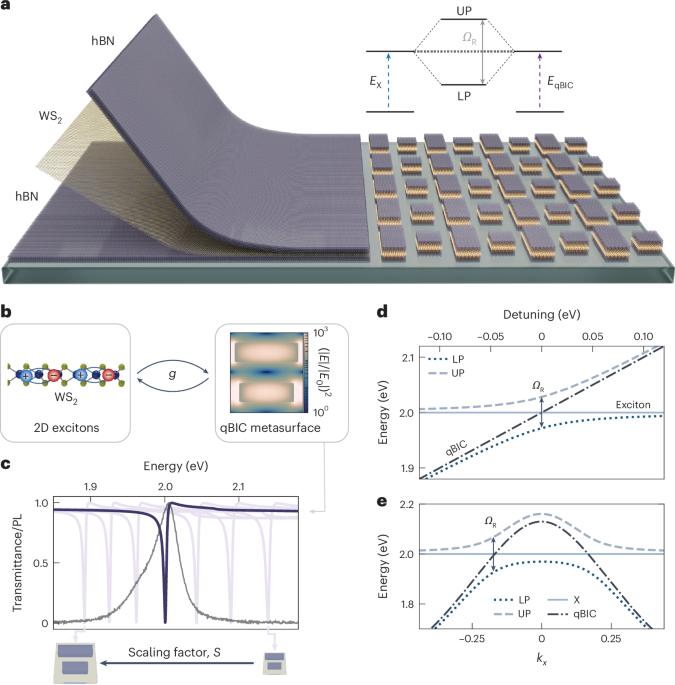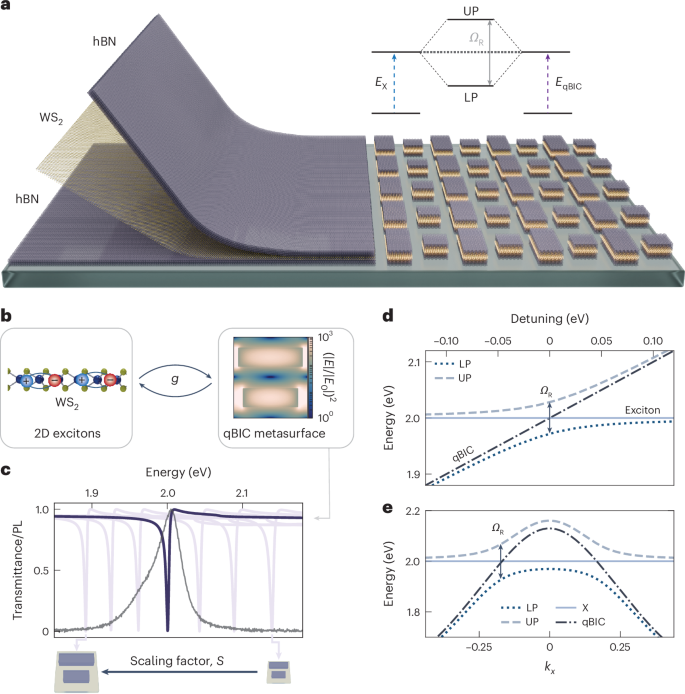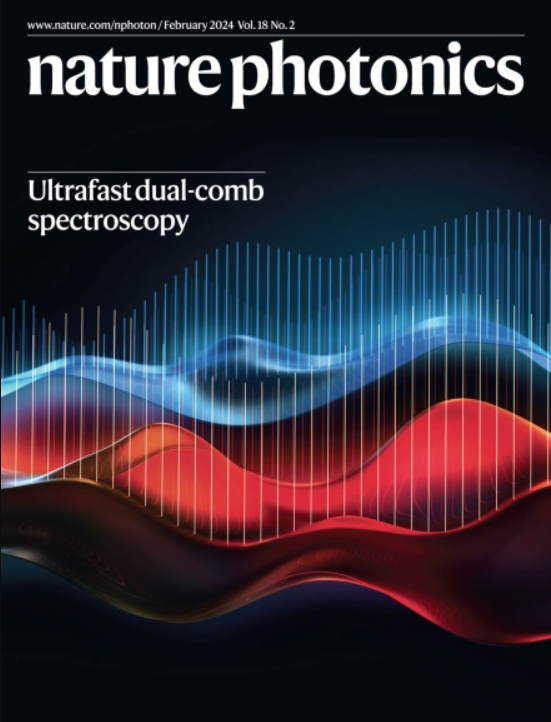范德华异质结构超表面超薄光学腔的原子层组装
IF 32.9
1区 物理与天体物理
Q1 OPTICS
引用次数: 0
摘要
光学超表面的进步彻底改变了光子学,为平面光学元件的设计和工程提供了机会。同样,层状二维材料通过垂直异质结构的确定性组装实现了物理学上的突破,从而可以精确控制每层的原子组成。然而,将这些领域整合到一个单一系统中仍然具有挑战性,限制了原子尺度光学腔和超材料的进展。在这里,我们展示了范德华异质结构超表面的概念,其中超薄多层范德华材料堆叠被精确地塑造成工程共振纳米结构,以增强光-物质相互作用。通过利用连续介质物理中的准束缚态,我们在厚度低于130 nm的六方氮化硼中封装WS2单层,创造了固有的高质量因子共振,实现了室温强耦合和极化光致发光发射。此外,超表面耦合激子极化子表现出强烈的非线性,导致强耦合区在1 nJ cm-2的超低影响下饱和,比以前基于二维材料的腔体系统低三个数量级。我们的方法集成了超表面和范德华材料,可以扩展到现有的大量二维材料库,为原子级精度和控制的超薄极化器件的环境操作开辟了新的途径。本文章由计算机程序翻译,如有差异,请以英文原文为准。


Atomic-layer assembly of ultrathin optical cavities in van der Waals heterostructure metasurfaces
Photonics has been revolutionized by advances in optical metasurfaces, unlocking design and engineering opportunities for flat optical components. Similarly, layered two-dimensional materials have enabled breakthroughs in physics via the deterministic assembly of vertical heterostructures, allowing precise control over the atomic composition of each layer. However, integrating these fields into a single system has remained challenging, limiting progress in atomic-scale optical cavities and metamaterials. Here we demonstrate the concept of van der Waals heterostructure metasurfaces, where ultrathin multilayer van der Waals material stacks are shaped into precisely engineered resonant nanostructures for enhancing light–matter interactions. By leveraging quasi-bound states in the continuum physics, we create intrinsic high-quality-factor resonances originating from WS2 monolayers encapsulated in hexagonal boron nitride at thicknesses below 130 nm, achieving room-temperature strong coupling and polaritonic photoluminescence emission. Furthermore, the metasurface-coupled exciton–polaritons exhibit strong nonlinearities, leading to a saturation of the strong-coupling regime at ultralow fluences of <1 nJ cm–2, three orders of magnitude lower than in previous two-dimensional-material-based cavity systems. Our approach monolithically integrates metasurfaces and van der Waals materials and can be extended to the vast library of existing two-dimensional materials, unlocking new avenues for ambient operation of ultrathin polaritonic devices with atomic-scale precision and control. Ultrathin multilayer van der Waals material stacks are shaped into precisely engineered resonant nanostructures, giving strong nonlinearities at ultralow fluences of <1 nJ cm–2, more than three orders of magnitude smaller than in previous two-dimensional-material-based cavity systems.
求助全文
通过发布文献求助,成功后即可免费获取论文全文。
去求助
来源期刊

Nature Photonics
物理-光学
CiteScore
54.20
自引率
1.70%
发文量
158
审稿时长
12 months
期刊介绍:
Nature Photonics is a monthly journal dedicated to the scientific study and application of light, known as Photonics. It publishes top-quality, peer-reviewed research across all areas of light generation, manipulation, and detection.
The journal encompasses research into the fundamental properties of light and its interactions with matter, as well as the latest developments in optoelectronic devices and emerging photonics applications. Topics covered include lasers, LEDs, imaging, detectors, optoelectronic devices, quantum optics, biophotonics, optical data storage, spectroscopy, fiber optics, solar energy, displays, terahertz technology, nonlinear optics, plasmonics, nanophotonics, and X-rays.
In addition to research papers and review articles summarizing scientific findings in optoelectronics, Nature Photonics also features News and Views pieces and research highlights. It uniquely includes articles on the business aspects of the industry, such as technology commercialization and market analysis, offering a comprehensive perspective on the field.
 求助内容:
求助内容: 应助结果提醒方式:
应助结果提醒方式:


